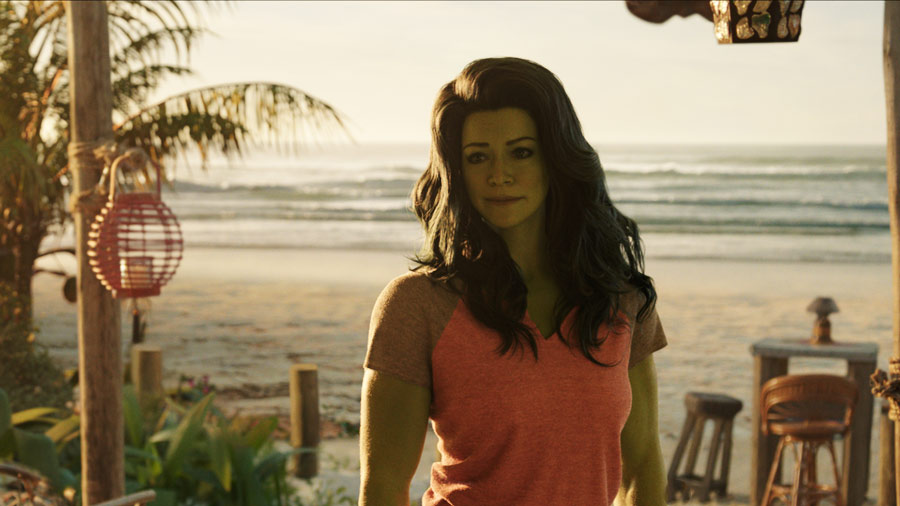She-Hulk: Attorney at Law is the perfect personification of what Phase 4 of the Marvel Cinematic Universe (MCU) has been, while also representing what Phase 5 could be.
The show heavily plays on nostalgia and its place in the MCU, with cameos from Wong, Daredevil, Abomination and Hulk. There are superpowered beings all around, and references to Marvel films are sprinkled with abandon. Not all of them land, but there is an ease in incorporating the MCU, which is refreshing from all the cameos that feel deliberately placed for applauding theatres.
The grounded side of a superhero
She-Hulk: Attorney at Law also shines while exploring the grounded side of the superhero world. We actually witness superstrength being used to carry water canisters around the house, catfish men on dating apps and drink yourself hoarse without getting a hangover. The CGI largely sticks to the main character Jennifer Walters’s appearance, without stylising fight sequences (there barely are any), and no beam goes up in the sky. This isn’t about world-ending threats.
The refuses to take itself seriously
The lower stakes could have led to a moving character study, making us understand why most superheroes need therapy beyond the staple daddy issues. On paper, She-Hulk has her work cut out for her, carrying the responsibilities of a superhero alter-ego while balancing the weight of public expectations. But, in comes the ‘Marvel problem’. The show uses humour at every step and refuses to take itself seriously. While it works in parts, this largely gets in the way of feeling anything for the character, with jokes often trivialising her struggles. The one thing that made every Phase 1 film such a great origin story was its heart. Unfortunate that She-Hulk: Attorney chose quips over it.
Top-notch humour and fourth wall breaks
That being said, the humour itself is top notch. Most jokes have some nuance beyond the standard Marvel ‘punny’ brand. They come from Jen’s rage and helplessness. Her tenacity and truth bombs don’t just add zing to interactions but give a much needed reality check to us — the men who sit comfortably in majority. If you have an XY set of chromosomes and the women-centric jokes make you uncomfortable, congratulations, you have been in a male echo chamber. Unfortunately, we would have taken the pain of Jen’s humour more seriously if her jokes-per-minute ratio wasn’t the same as every single character in the MCU. I blame KEVIN’s algorithm. Incidentally, the KEVIN reference is the highlight of the show’s metaness. The writers routinely do more than break the fourth wall, holding audiences, the studio, and themselves accountable.
A woman superhero in a man’s world
Talking about writing, there are subtle hints that make She-Hulk the first female superhero in the MCU that truly feels written by women. Both Captain Marvel and Black Widow often felt like they were based on how men pictured empowered women. But Jen feels like a woman in a man’s world, plagued by all the challenges misogyny places in her way and yet unperturbed because she still needs to pay her bills. She’s not a holier-than-thou deity who goes around imparting wisdom or tries to become a caregiver to the Oedipus-fanboys in her life. She’s a mess.
But very little actually happens
Sadly, so is the show. There is very little that actually happens, despite almost six hours of cumulative runtime. The tonal problems are accentuated by inconsistent pacing, and the protagonist can’t do anything to save it, except maybe crack a joke. Now that I think of it, maybe if Jen Walters had received an R-rated comedy special instead of a nine-episode series, I probably would’ve liked her much more.
This also gives way to many questions about the character’s future. While the immense hatred might push Feige and co. to revamp She Hulk’s persona, I really hope they keep the good parts. Changing a woman for male perception might be a joke that’s too on-the-nose, even for the show.










